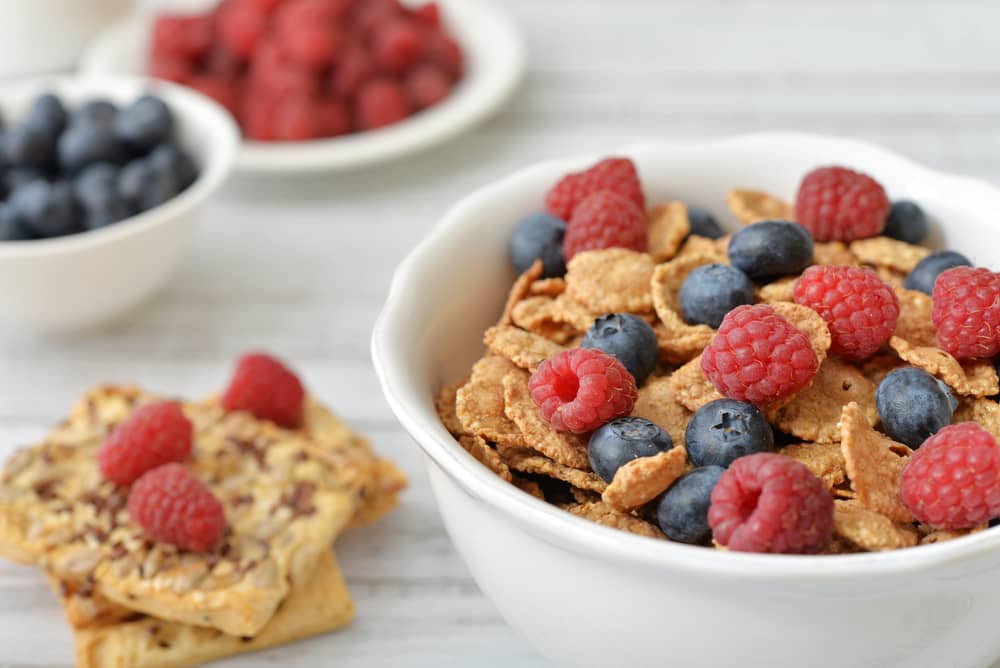Eating, Diet, & Nutrition for Diverticular Disease
Does what you eat and drink play a role in causing or preventing diverticular disease?
Research suggests that a diet low in fiber and high in red meat may increase your risk of getting diverticulitis—inflammation of one or a few pouches in the wall of your colon. Eating high-fiber foods and eating less red meat may lower the risk.
The Dietary Guidelines for Americans, 2020–2025, recommends a dietary fiber intake of 14 grams per 1,000 calories consumed. For example, for a 2,000-calorie diet, the fiber recommendation is 28 grams per day.
What should I eat and drink if I have diverticular disease?
If you have chronic symptoms of diverticular disease or if you had diverticulitis in the past, your doctor may recommend eating more foods that are high in fiber.
 Your doctor may recommend eating more foods that are high in fiber.
Your doctor may recommend eating more foods that are high in fiber.
Talk with a health care professional, such as your doctor or a dietitian, to plan meals with the right amount of fiber for you. Health care professionals may recommend increasing the amount of fiber you eat a little at a time, so your body gets used to the change.
The amount of fiber in a portion of food is listed on the food’s Nutrition Facts label. Some examples of fiber-rich foods are listed in the table below.
Examples of fiber-rich foods
| Grains | |
|---|---|
| Food and Portion Size | Amount of Fiber |
| 1/2 cup of ready-to-eat cereal, high fiber, unsweetened | 14.0 grams |
| 1/2 cup of bulgur, cooked | 4.1 grams |
| 1 ounce of crackers, whole wheat | 2.9 grams |
| 1 ounce of tortillas, whole wheat | 2.8 grams |
| Fruits | |
|---|---|
| Food and Portion Size | Amount of Fiber |
| 1 cup of raspberries | 8.0 grams |
| 1 medium Asian pear | 6.5 grams |
| 1 medium apple, with skin | 4.8 grams |
| 1/4 cup of prunes or dried plums | 3.1 grams |
| Vegetables | |
|---|---|
| Food and Portion Size | Amount of Fiber |
| 1 cup of green peas, cooked | 8.8 grams |
| 1/2 cup of lentils, cooked | 7.8 grams |
| 1/2 cup of pinto beans, cooked | 7.7 grams |
| 1 cup of sweet potato, cooked | 6.3 grams |
| 1/2 cup of chickpeas (garbanzo beans), cooked | 6.3 grams |
| 1/2 cup of kidney beans, cooked | 5.7 grams |
| 1 cup of broccoli, cooked | 5.2 grams |
| 1 cup of collard greens, cooked | 4.8 grams |
Should I avoid certain foods if I have diverticulosis or diverticular disease?
Most people with diverticulosis or diverticular disease do not need to avoid specific foods. In the past, doctors used to recommend avoiding nuts, popcorn, and seeds. However, more recent research suggests that these foods are not harmful to people with diverticulosis or diverticular disease.
If you have diverticulosis or diverticular disease, talk with your doctor about whether you should change what you eat and drink.
This content is provided as a service of the National Institute of Diabetes and Digestive and Kidney Diseases
(NIDDK), part of the National Institutes of Health. NIDDK translates and disseminates research findings to increase knowledge and understanding about health and disease among patients, health professionals, and the public. Content produced by NIDDK is carefully reviewed by NIDDK scientists and other experts.
